
In my old age of 27 I have realised that I can no longer just sleep anywhere - I've got fussy. Comfort seems to have become paramount to getting a good night's shut eye and sleep is maybe the most valuable tool in an alpinist's belt for big alpine days. Sure you can be fit and strong but when you've got a 15+ hour day ahead of you, you won't be able to keep the pace up off just a few hours sleep. So I added a NeoAir to my alpine arsenal.
Fast forward a year and I'm preparing for my first expedition to Alaska. I'll be on the glacier for six weeks and I'm starting to think that maybe I will want something a little more comfortable than my humble NeoAir... I'm getting older. The NeoAir is a remarkable improvement over a foam mat but I wanted something really nice and comfortable. Exped have been around for quite a while and are one of only a few companies that make, amongst a host of other kit, what I would call top quality 'base camp' mats. My Exped DownMat7 Pump arrived the day before we left for Alaska and it wasn't until getting onto the glacier that I got to actually unpack the thing.
So, in a nutshell the DownMat7 Pump is, not surprisingly, an inflatable mat with down in it for extra insulation. The mat comes with an integrated self inflating pump so that you don't have to breathe into it and dampen the down. The outershell is a tough laminated polyester fabric with the top featuring a honeycomb pattern on it for extra grip on you and your sleeping bag. Weighing in at 880g for a regular size (it also comes in 'short' and 'DLX' versions) it is about 70% heavier than a Ridge Rest, but more than twice as warm (R-value of 5.9 vs 2.6). It packs down to that old standard of a loaf of bread and RRPs at £115.
So what makes this mat stand out from the rest? My only other experience of inflatable mats is the NeoAir, and they are hard to compare fairly. The Exped DownMat7 Pump is quite an advanced piece of kit. OK, so it's 'just' an inflatable mat but a lot of thinking has gone into it.
"My climbing partner was using a bunch of foam mats and after a few days would be well and truly sunk into the floor in some kind of odd fetal shaped hole. On the other hand, the Exped insulated the warmth so well from my body that I retained my elevated status above the snow, and therefore was king of the tent..." |
Warmth
This is a down filled mat not a simple lilo. Inside the mat lies 170g of EU 700 down fill. The theory behind this is that instead of just having a layer of air between yourself and the ground (such as in the NeoAir) there will be a thin, but effective, layer of fluffy down to prevent any convection currents arising within the trapped air. Heat sinks and convection currents are the air mattress' nemesis. With a down mat your heat loss to the ground will be very minimal - the R rating of 5.9 shows that (the NeoAir for example has a R rating of 2.5 for a very similar thickness).
Effective proof of this is how the snow under your tent melts over time. My climbing partner was using a bunch of foam mats and after a few days would be well and truly sunk into the floor in some kind of odd fetal shaped hole. On the other hand, the Exped insulated the warmth so well from my body that I retained my elevated status above the snow, and therefore was king of the tent. The other advantage of being a full 7cm above the deck is that you wont get the dreaded cold spots. If, like most of the population, you sleep on your side you'll find that you'll get cold spots on places like your hips where there is the most pressure on a mat (this is especially true when sleeping on snow). Obviously you can wave goodbye to those days with an inflatable mat.
Exped DownMat 7 Pump
- Light foam blocks at the mat's ends prevent down escaping.
- Durable, airtight and humidity resistant laminated polyester fabric.
- Brushed polyester top surface is slip resistant and comfortable.
- Dark colors dry quickly.
- Seams are high frequency welded for durability.
- Loops can secure the packsack to the mat when used as a pillow.
- Low profile valves (one for inflation and the other for deflation) ensure ease of use.
- Valves are flat so are protected and durable.
- Thick air cushion provides comfort and smooths out uneven ground.
- As down compresses extremely well, DownMats packs smaller than other insulated mats.
- Exped only uses IDFL-certified goose down, treated to eliminate the effects of humidity.
- Temperature: -24°C
- Sizes: short 120x52x7cm; regular 183x52x7cm; DLX 197x65x7cm
- Packed sizes: 23x12cm; 23x16cm; 27x14cm
- Weights: 630g; 880g; 1140g
- Fill Weights: 130g; 170g; 220g
Comfort
So, all good on the heat front but how did it fare comfort wise? Harping back to my NeoAir, whilst it was way better than a foam mat it also felt a bit like sleeping on a lilo - not so good at displacing your weight equally. This is heavily due to the fact that it does not have any 'tubes'. The DownMat7 has longitudinal tubes, which I think help the air and weight displacement a lot more. It actually makes quite a difference. The non-slip honeycomb polyester top surface was also great as I often found myself sliding off my NeoAir especially when sleeping on a slight slope. The DownMat7 also sports a tough and rugged outershell - of course the downside of this is that you pay for it in the weight department. However it should alleviate any fears of punctures that people often have with inflatable mats.
Due to the down filling you aren't meant to inflate it by breathing into it as this will introduce humidity into the down and make it clump up. Instead there is an integrated pump in the mat. I cant really explain it without boring you to death so I'll leave it as that. However I thought this was easily the weakest feature of the mat. It took so long to inflate it this way that I'd get half way into it and just start blowing into it directly. Now I don't bother using the pump and just inflate it normally. The down is actually treated against humidity so it caters for anyone wishing to inflate it by lung power as well - in other words whist this is not the recommended way of doing it, you wont ruin your mat for life by doing so.
Summary
I feel I must stress how incredibly comfortable this mat is to sleep on. Its weight and packed size (think large loaf of bread here) means that I will never carry it up on a route with me but as a base camp or normal camping mattress it's brilliant. I really have used this mat a lot not only in Alaska but now that I am back in Chamonix on normal camping trips and I have yet to have a puncture or any problems with it. As I say, even though the weight is amazing for such comfort and warmth (880g for regular) it will still remain at 'valley' level. If you are looking for something that you want to take up on routes with you then the new Exped SynMat 7 UL might be the thing to go for once it's released - it's half the weight and packs down to a half litre bottle.
The Exped DownMat7 is not just some specialised piece of kit, but something that can be used in all situations. While I have stressed that it is not suitable for actual routes I still found that the 880g meant it was light enough to warrant transporting between Base and Advanced Base Camp in Alaska, which was a good few miles away at times. It has not been only confined to colder climes either as more recently it has been deployed a fair bit in summer when on cragging trips away - just make sure you bring a light sleeping bag to compensate for the extra warmth!
PRICE: £115
MORE INFO: on the Exped Website.
About Jon Griffith

Jon Griffith's first climbing days were in the Avon Gorge at Bristol. After university he moved to Chamonix, where he works as a professional mountain photographer: www.alpineexposures.com.
"It's hard to pick one specific type of climbing that I prefer over the others but I think my heart still lies with big mixed alpine routes that potentially involve a couple of nights bivying. I am still getting used to the whole Chamonix 'get back in time for the last lift' style - I still include bivying as a part of any decent mountaineering experience. I am also still getting used to crack climbing - it hurts.... a lot."



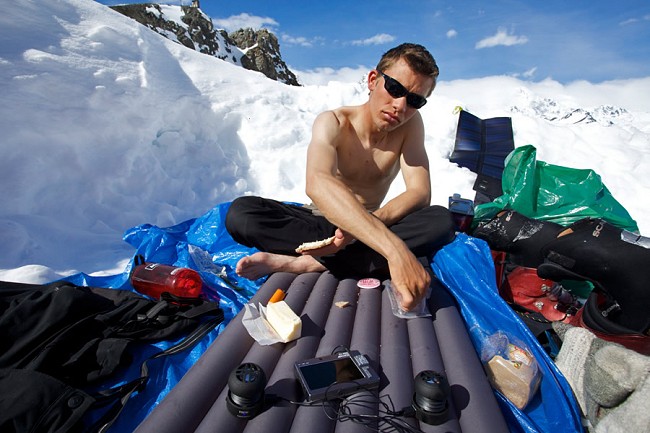
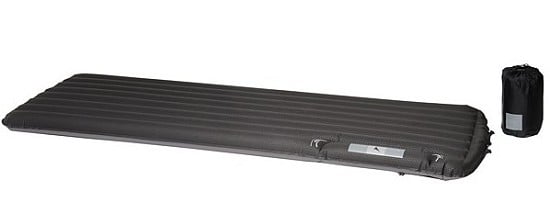

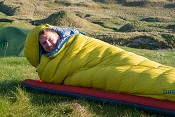
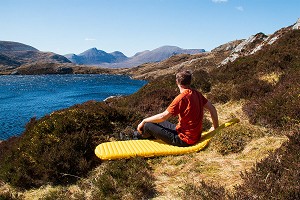
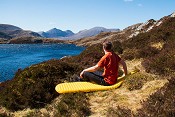


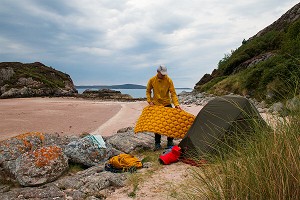
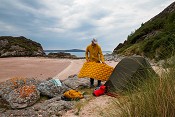
Comments